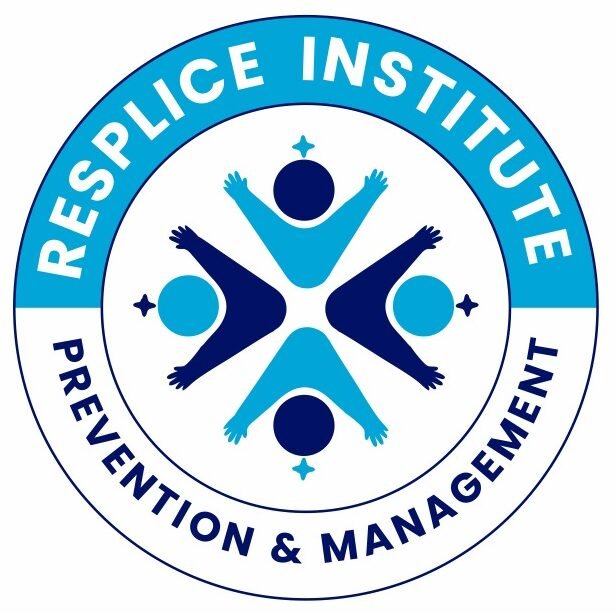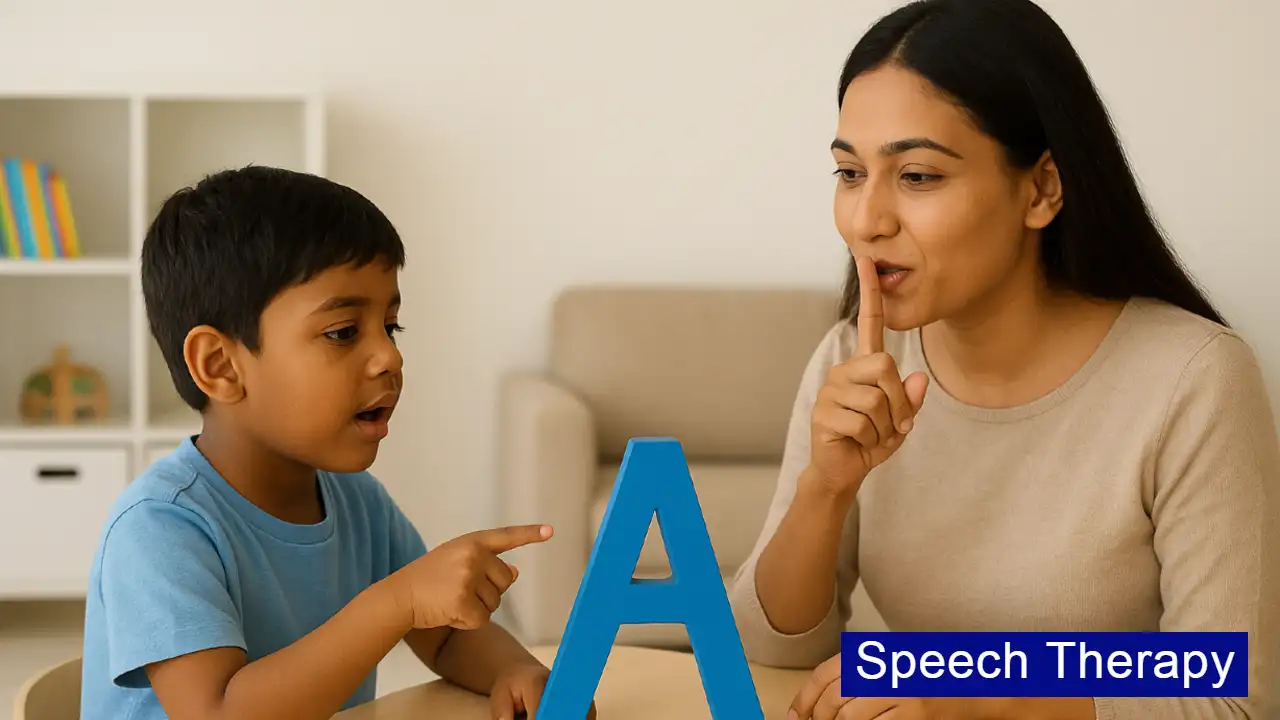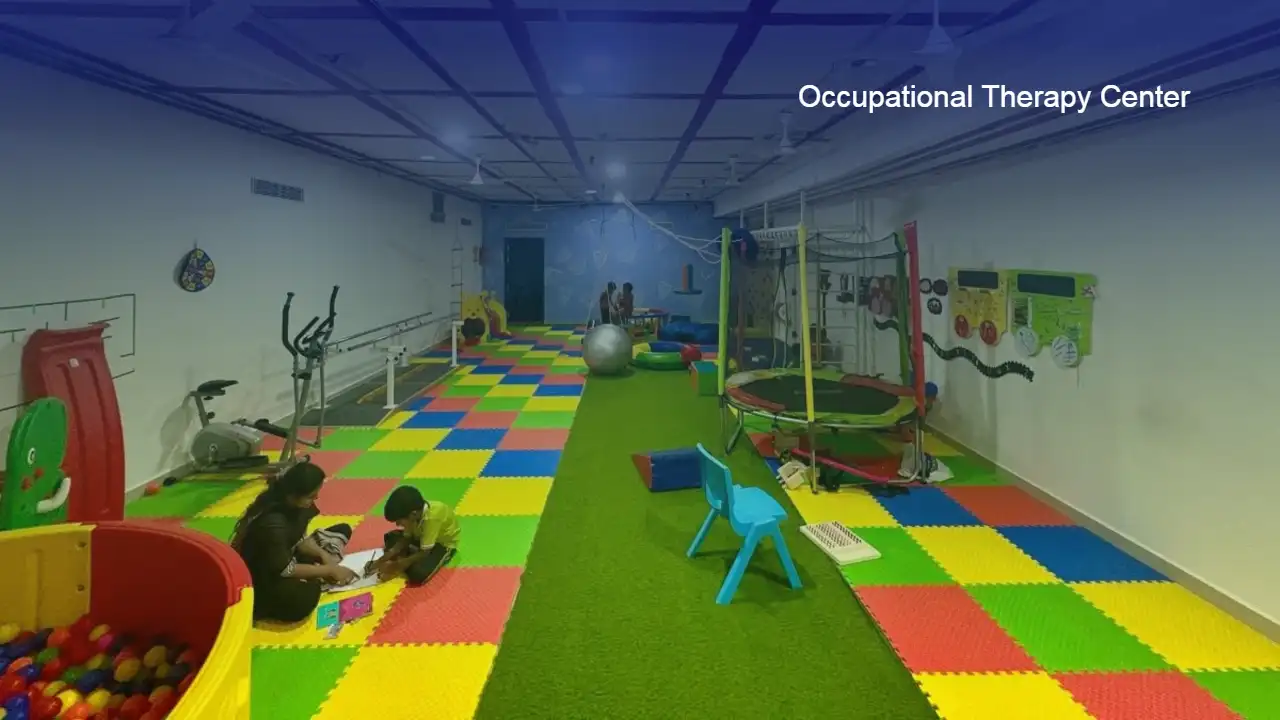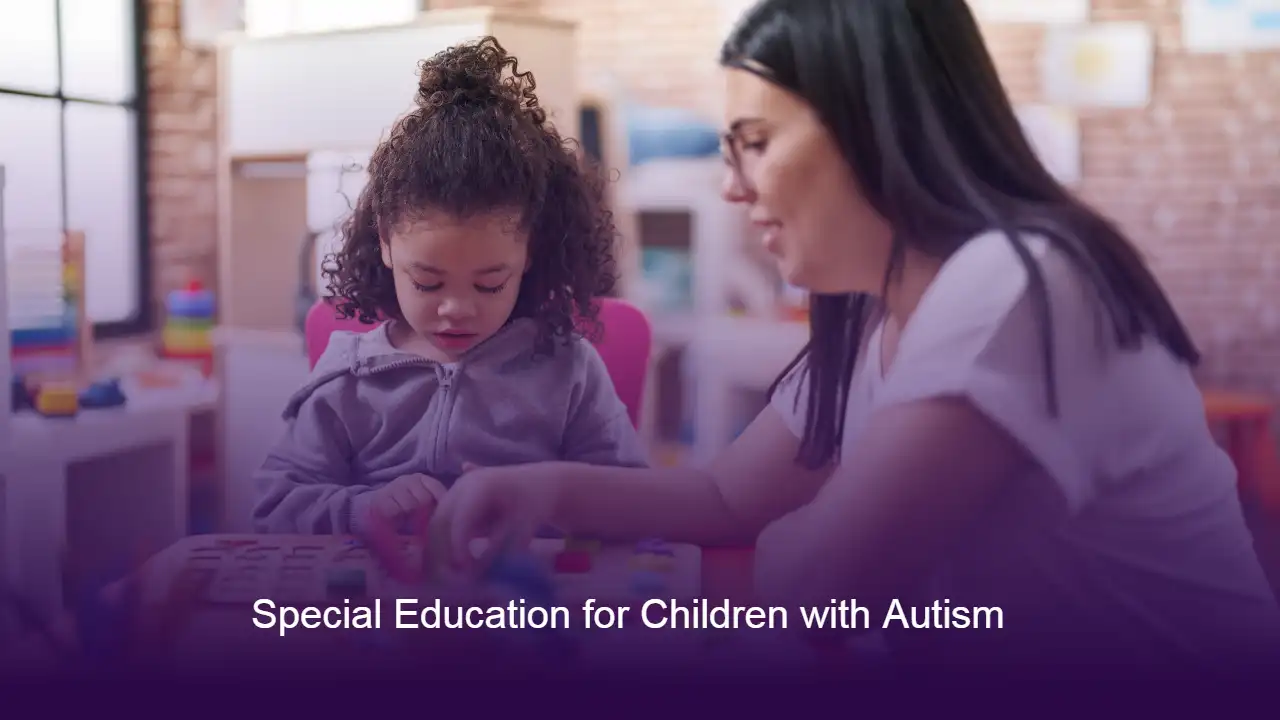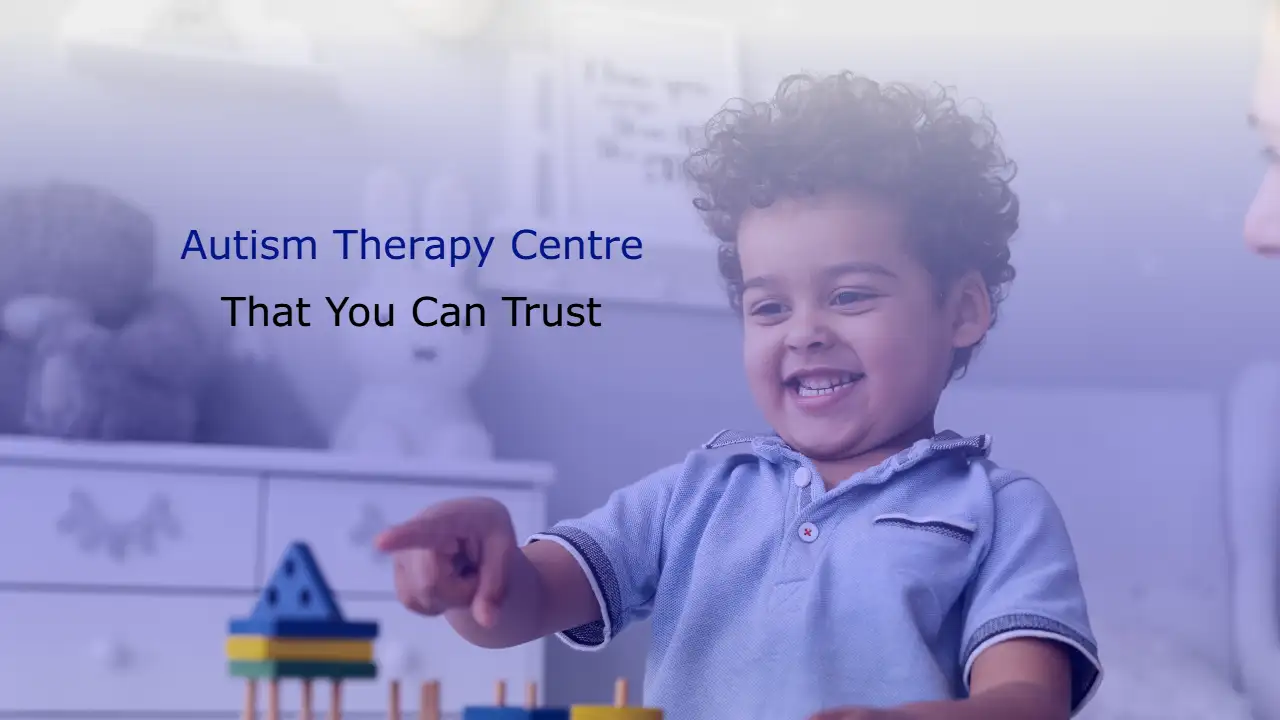Communication is at the heart of being human. It helps us share ideas, build relationships, and make sense of the world. But for many children with autism spectrum disorder, developing speech and language doesn’t come easily.
Speech therapy has become a lifeline for families, offering hope and tools that can transform a child’s ability to communicate. In this comprehensive guide, you’ll learn what speech therapy is, how it works, and why it’s often life-changing for children with Autism Spectrum Disorder.
What Is Speech, exactly?
Speech is more than simply talking. It’s the process of producing sounds and words in a way that others can understand.
Speech involves three main components:
- Articulation – How we shape sounds using the lips, tongue, teeth, palate, and vocal cords.
- Voice – The quality, pitch, and loudness of what we say.
- Fluency – The smoothness and flow of our speech without excessive pauses or repetitions.
Children with ASD may experience challenges with any or all of these aspects, leading to frustration and barriers in connecting with others.
What Is Speech Therapy?
Speech therapy is a specialized intervention provided by certified speech-language pathologists (SLPs). It focuses on:
- Improving speech clarity and articulation
- Enhancing language comprehension and use
- Teaching nonverbal communication
- Strengthening social interaction skills
- Supporting alternative communication methods when needed
For children on the autism spectrum, speech therapy isn’t a one-size-fits-all approach. Each therapy plan is tailored to the child’s individual strengths, needs, and developmental level.
How Does Speech Therapy Support Children with Autism Spectrum Disorder?
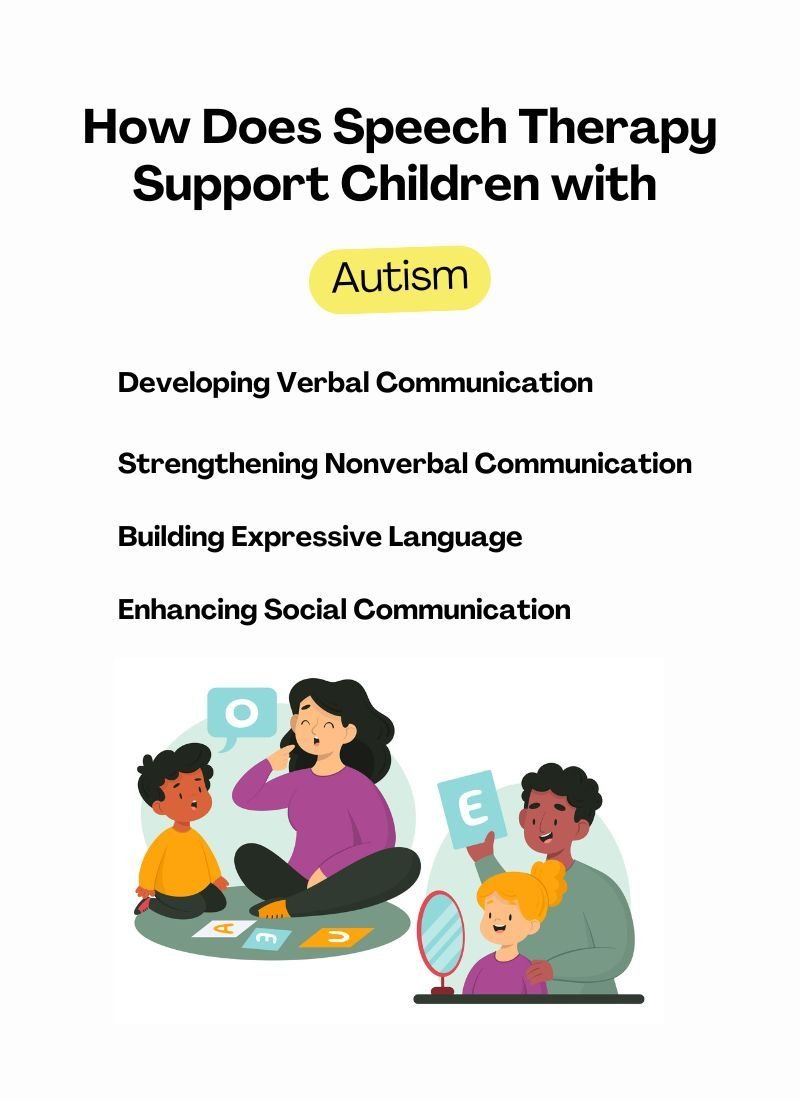
Developing Verbal Communication
One of the primary goals of speech therapy is to help children learn to use spoken language effectively. Therapists may:
- Teach children to produce sounds accurately
- Build vocabulary step by step
- Practice simple phrases and sentences for everyday communication
Strategies that help:
🔹 Visual Supports
- Picture Exchange Communication System (PECS) allows children to exchange pictures for desired items or activities.
- Visual schedules help children understand routines and expectations.
🔹 Modeling and Imitation
- Therapists model clear speech and encourage imitation of words and sounds.
🔹 Repetition and Routine
- Consistent practice helps reinforce learning and build confidence.
Strengthening Nonverbal Communication
Not every child is ready or able to speak right away. Nonverbal communication skills form the foundation for later language development.
Therapists may teach children to:
- Use gestures like pointing or waving
- Make choices with picture cards
- Use simple sign language for essential needs (“more,” “help,” “eat”)
- Benefits of nonverbal communication:
- Reduces frustration
- Helps children express basic needs
- Builds engagement and trust
Building Receptive and Expressive Language
Receptive language is the ability to understand what others say. Expressive language is the ability to communicate thoughts and needs.
Therapists focus on both:
Receptive Skills:
- Following directions (“Get your shoes”)
- Identifying objects and pictures
- Understanding questions and stories
Expressive Skills:
- Labelling items (“ball,” “dog”)
- Requesting (“I want juice”)
- Describing feelings (“I am happy”)
Tools used:
- Flashcards and visuals
- Play-based activities
- Storytelling
- Games that encourage turn-taking and expression
Enhancing Social Communication
Children with ASD often struggle with the “social” side of communication—using language to interact with others appropriately.
- Speech therapy helps children learn:
- How to start and maintain a conversation
- How to take turns speaking
- How to greet others and respond
- How to use polite language and ask for help
Methods that support social communication:
🔸 Role-Playing: Practicing social situations in a safe environment
🔸 Video Modelling: Watching examples of peers interacting
🔸 Social Stories: Personalized stories that explain social rules
🔸 Peer Interaction: Practicing skills with classmates or siblings
Why Is Speech Therapy Effective for Autism?
Countless studies and success stories show that consistent speech therapy leads to:
✔ Improved ability to communicate needs and ideas
✔ Stronger social skills and relationships
✔ Reduced frustration and behavioural issues
✔ Greater confidence and independence
The earlier therapy begins, the better the outcomes—early intervention during toddler and preschool years can make a lasting impact.
The Important Role of Parents and Caregivers
Therapy sessions are just one piece of the puzzle. Progress depends on practice and support at home and in everyday situations.
What parents can do:
- Use visuals and gestures daily: Label objects, use picture cards, and model signs.
- Create opportunities to communicate: Offer choices instead of anticipating needs so your child can practice requesting.
- Be consistent: Use the same words, pictures, or signs each time.
- Celebrate successes: Positive reinforcement boosts confidence and motivation.
- Stay patient: Communication takes time, and every small step is progress.
Real-Life Impact: Stories of Progress
Families often describe speech therapy as a turning point in their child’s life. Here are just a few examples of what progress can look like:
- A 3-year-old boy who was completely nonverbal learns to point to pictures to request food and toys—and eventually begins to say single words like “juice” and “ball.”
- A 5-year-old girl develops the ability to greet her classmates and participate in circle time using short sentences and gestures.
- An 8-year-old uses an iPad communication app to tell her parents how she feels, reducing frustration and tantrums.
Each journey is unique, but the common thread is hope, persistence, and the right support.
Speech Therapy Tools and Techniques for Speech Development
Here are some examples of evidence-based tools and methods commonly used in speech therapy for ASD:
Visual Supports:
- PECS
- Communication boards
- Visual schedules
AAC (Augmentative and Alternative Communication):
- Speech-generating devices
- Communication apps on tablets
Prompting and Reinforcement:
- Verbal prompts (“Say ‘more’”)
- Gestural cues
- Positive reinforcement when a child communicates successfully
Natural Environment Teaching:
- Practicing skills during meals, play, and daily routines
Parent Coaching:
- Teaching families how to model and reinforce language at home
What to Expect in a Speech Therapy Program
Every program is tailored, but here’s what a typical plan might include:
Initial Assessment:
- Evaluating current communication skills
- Identifying strengths and challenges
- Setting specific goals
Individualized Treatment Plan:
- Choosing appropriate strategies and tools
- Scheduling regular sessions (often weekly or bi-weekly)
- Ongoing Evaluation:
Tracking progress
- Adjusting techniques as the child grows
Family Training:
- Helping caregivers practice skills between sessions
How Long Does speech therapy Take to See Progress?
Every child develops at their own pace. Factors influencing progress include:
- The child’s age
- The severity of speech and language challenges
- Consistency of therapy
- Family involvement
- Motivation and readiness
Some children show improvements in a few months, while others may need years of ongoing support. The most important thing is to stay consistent and celebrate every milestone.
When Should You Seek Speech Therapy?
If you notice any of the following, it’s worth consulting a speech-language pathologist:
🔹 Limited babbling or no words by 18 months
🔹 Difficulty understanding simple directions
🔹 Lack of gestures or eye contact
🔹 Regression in speech or social engagement
🔹 Limited interest in interacting with others
Early evaluation and intervention can make a significant difference.
Final Thoughts: Giving Every Child a Voice
Speech therapy is about so much more than talking. It’s about connection, self-expression, and empowerment. For children with ASD, learning to communicate—whether through words, gestures, or technology—can open up a world of possibilities.
If you’re considering speech therapy for your child, know that you’re taking an important step toward helping them reach their fullest potential. With patience, professional guidance, and loving support, you can give your child the tools to share who they are with the world.
Contact Us at Resplice Institute for expert Speech Therapy in Hyderabad. We are recognized among the best autism treatment centres in Hyderabad, providing programs to help children improve communication, language, and social skills.
